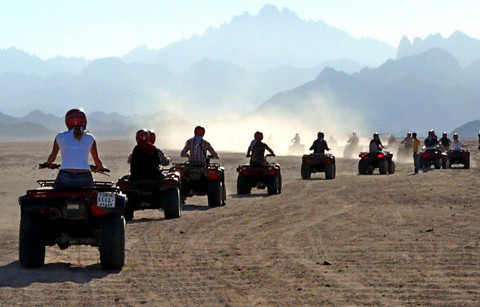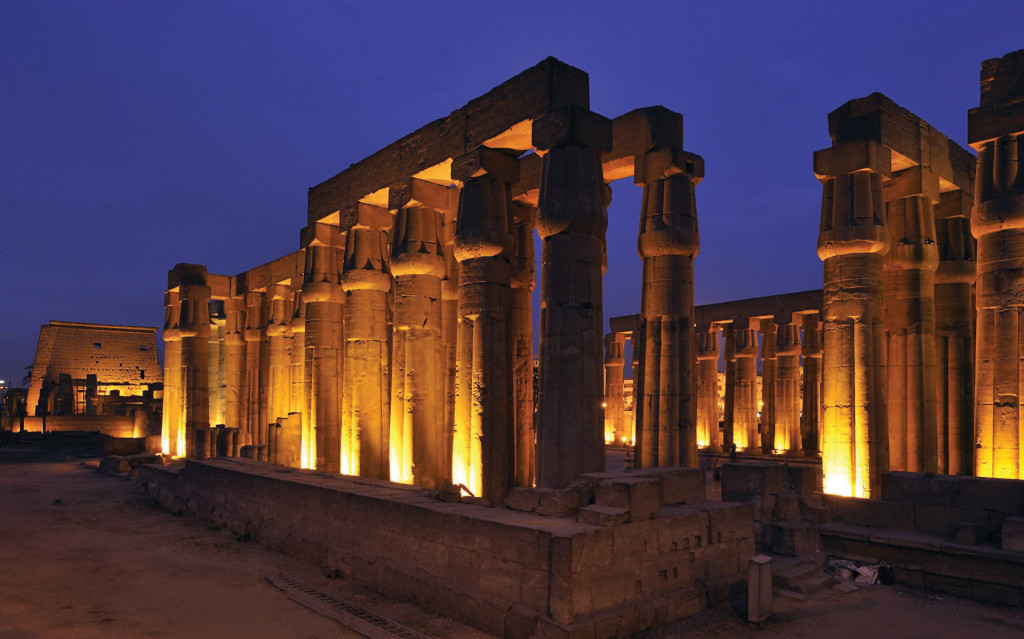| Ninety-nine monuments were recorded in Dakhla and Kharga oases ,Kharga is so full of ancient artifacts that every inch of dirt tells a story.There are so many sites that need excavation that a lifetime of digging will not uncover them all. Most sites have tombs, town, and temples, mostly buried. There are residential structures of prehistoric peoples north of Kharga at Gebel al- Teir. There are over fifty sites, mostly Roman, That have never been touched such as Bir al-Gebel, Ain Haran, Ain Yasim, Kanafis, Ain Hussein, and Ain Byramdi, all in the north and Ain Aska, Gebel Siwa, Gebel Sharfa, Ain Mansurm Wakfa, Badran, Mabruka, and Qasr Baris, all in the south. The long range plan for the New Valley includes tourism as one of its major goals. The infrastructure of new roads, new hotels, and tourism offices in all the oses is nearly complete. Now the monuments are being prepared for visitors. As more travelers respond to the lure of the oases, more and more sites will be on their list of ‘must sees.’ That means these sites must, at least, acquire guards. |
|
On the west side of the road, visible from Ain Zaaf but accessible only by 4X4, as it is surrounded by sand dunes, is the well-preserved Roman mudbrick watchtower of Tahunet al-Hawa, the windmill. Standing 11.5 meters (36 feet) tall with a southern entrance, |
|
One of the first sites to greet the traveler is the Mabrouk fountain in the midan near the Tourist Information Office. The statues decorating the fountain were completed in three days by the local artist Mabrouk. The large breasted woman is intended to symbolize Egypt as she drags her reluctant child, the people of Egypt, behind her to a new destiny. The statues are made of cement, alabaster, and gypsum. |
| The suq is the traditional marketplace of Qasr Kharga and although visited by tourists its main purpose is to serve the local population. That does not mean there is nothing for the tourist to buy-hand-woven baskets, scarves, and other items used by residents make excellent and authentic souvenirs. |
| Despite the fact that its people lived in isolation, hundreds of miles from any other inhabited area, almost every village that was built in the Western Desert during the Middle Ages was in the form of a fortress. The Darb al-Sindadiya, the original village of Qasr Kharga, is no exception. Centered around the Ain al-Dar, a now dry spring, it is the best preserved of all the fortress cities in the oases. The narrow, covered streets described by European travelers, in some places only a meter wide, kept out invaders mounted on horses or camels. Twists and turns provided good ambush in case the enemy did manage to penetrate the town. The multi-storied houses with no windows to the outside formed formidable walls that could not be scaled. Although the interior was pitch black and even at high noon the passages had to be lit by oil lamps, the darkness provided cooling shade from the brutal desert sun. The name came from a family that once lived there and it originally designated the main street of the village. Today it represents the entire structure. As a street, it once ran for 4 kilometers (2.5 miles). It no longer does, but enough of it exists to give visitors a picture of what life as like in a medieval oasis town. Although tourists are encouraged to visit the site, it is not recommended they journey too far into the interior without a guide for one could easily become lost. Minimally inhabited by people, the passages are used primarily as barns for domestic animals. Built entirely of mudbrick with palm trunks as beams, this tenth-century city is one of the treasures of Qasr Kharga and plans are underway for its restoration . |
| Two factories were established in the early sixties to produce traditional pottery and carpets in the hopes of establishing new industry in the oasis. Through the years the work has expanded to include a variety of products. Local artists, using modern pottery methods make not only traditional pots, but candlesticks and flatware. Two types of carpet are made in the carpet factory, knotted siggadas and woven kelims. |
|
The stunning Kharga Museum, housed in a new-building constructed to resemble the tombs at Bagawat, contains both Pharaonic and Islamic antiquities found in the New Valley. Located in the center of Kharga, along the main street, Sharia Gamal Abd al-Nasser, it is easy to find. |
Kharga Oasis
© Copyright 2015 LaPerla Travel Developed by Prominds : promindsco.com


